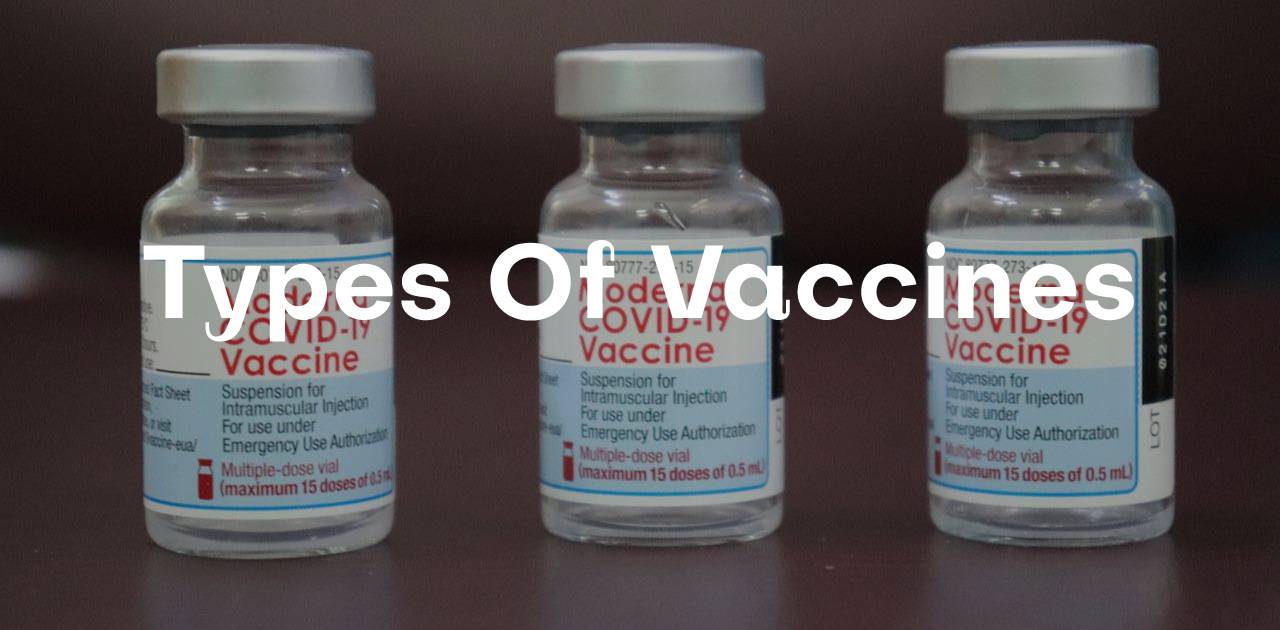Vaccines are an essential part of public health. There are many types of vaccines.They protect us from diseases by helping our bodies build immunity. In simple terms, a vaccine trains the immune system to recognize and fight specific pathogens like bacteria or viruses. This article will delve into the different types of vaccines, how they work, and why they are crucial for maintaining public health.
Types of Vaccines
There are several types of vaccines, each designed to teach the immune system in a slightly different way. The main types are:
- Messenger RNA vaccine (mRNA)
- Viral vector vaccine
- Whole inactivated vaccine
- Protein subunit vaccine
- Toxoid vaccine
- Live attenuated vaccine
Vaccine

Vaccines have saved Billions of lives over the years. They work by introducing a harmless part of the disease-causing microorganism into the body. This part could be a protein, a piece of genetic material, or a weakened form of the microorganism. When the immune system encounters this, it learns to recognize and fight the disease if exposed to it in the future.
Vaccines not only protect the individual but also contribute to community immunity or herd immunity. When an important portion of the population is vaccinated, diseases have got a signal to slow down, vaccines protecting those who cannot be vaccinated.

Messenger RNA vaccine (mRNA)
What Are They?
This types of vaccines (mRNA vaccines) are a newer type of vaccine to protect against infectious diseases. To stimulate an immune reaction, most vaccines introduce a weakened or inactive form of a germ into our bodies. However, mRNA vaccines work differently. They instruct our cells to produce a protein—or a fragment of a protein—that triggers an immune response within our bodies.
How Do They Work?
When the mRNA enters the cells, it instructs them to produce a protein that is similar to one found on the surface of the virus. The immune system identifies this protein as a foreign substance and generates antibodies to combat it. If the person is later exposed to the actual virus, the immune system can quickly recognize and destroy it.
Examples
The most well-known examples are:
- Pfizer-BioNTech COVID-19 Vaccine
- Moderna COVID-19 Vaccine
Advantages and Disadvantages
Advantages:
- Can be developed quickly, making them useful in pandemic situations.
- Never use the live virus that causes COVID-19.
Disadvantages
- Require very low storage temperatures, which can complicate distribution.
- As a new technology, long-term data is still being collected.
वैज्ञानिक कई दशकों से mRNA प्रकार की वैक्सीन का अध्ययन कर रहे हैं तथा इस तकनीकी से हमें कुछ COVID-19 वैक्सीन भी प्राप्त हुई है। mRNA वैक्सीन हमारे शरीर के प्रतिरक्षा प्रणाली को सतर्क करने के लिए प्रोटीन बनाती हैं अन्य वैक्सीनो की अपेक्षा mRNA वैक्सीन के अन्य लाभ भी है जैसे- निर्माण करने में कम समय लगता है क्योंकि इसमें जीवित विषाणु नहीं होता है जिससे वैक्सीन लेने वाले व्यक्ति को अन्य बीमारी होने का खतरा नहीं होता है।
Viral vector vaccine (Types of vaccines upsc)
What Are They?
This types of vaccines (Viral vector vaccines) employ an altered form of another virus (the vector) to convey crucial instructions to our cells. For COVID-19, a vector vaccine uses a harmless virus to deliver a gene that instructs cells to produce a protein found on the surface of the virus that causes COVID-19.
How Do They Work?
The modified virus delivers genetic material to the cells. The cells use this material to make a protein from the pathogen. This protein triggers the immune system to respond and create memory cells that will recognize and fight the real virus if encountered.
Examples
Examples of viral vector vaccines include:
- Johnson & Johnson COVID-19 Vaccine
- AstraZeneca COVID-19 Vaccine
Advantages and Disadvantages
Advantages:
- Can generate a strong immune response because they use a live virus to introduce the pathogen’s DNA.
- Can be stored at normal refrigerator temperatures, making them easier to distribute.
Disadvantages:
- Risk of pre-existing immunity to the vector, which might reduce vaccine effectiveness.
- As with mRNA vaccines, this technology is relatively new, and long-term data is still being gathered.
वायरल वेक्टर वैक्सीन सुरक्षा प्रदान करने के लिए एक वेक्टर के रूप में एक अलग वायरस के संशोधित संस्करण का उपयोग करते हैं। कई अलग-अलग वायरस वैक्टर के रूप में इस्तेमाल किए गए हैं वायरल वेक्टर वैक्सीन सुरक्षा प्रदान करने के लिए एक वेक्टर के रूप में एक अलग वायरस के संशोधित संस्करण का उपयोग करते हैं। कई अलग-अलग वायरस वैक्टर के रूप में इस्तेमाल किए गए हैं Viral vector vaccine हमें COVID-19 से बचाने में सहायक है। Viral vector vaccine हमें COVID-19 से बचाने में सहायक है।
Whole inactivated vaccine (Types of vaccines upsc)
What Are They?
This types of vaccines (Inactivated vaccines) use the very low power of the virus that causes a disease. Unlike live attenuated vaccines, the microorganism in inactivated vaccines is completely dead. However, it still contains enough of the germ’s characteristics to stimulate an immune response.
How Do They Work?
Since the germs are dead, they cannot replicate in the body. Instead, they trigger an immune response by exposing the immune system to the germ’s antigens. The body then learns to recognize these antigens and respond to them if encountered in the future.
Advantages and Disadvantages
Advantages:
- Low capability virus Vaccines are safer than live vaccines, especially for people with weakened immune systems.
- These vaccines are able to prevent disease.
Disadvantages:
- There are requirement of multiple doses or booster shots to maintain immunity.
- Tend to produce a weaker immune response compared to live attenuated vaccines
Protein subunit vaccine
What Are They?
This types of vaccines use specific part of the dead germ like its protein, sugar, or capsid . Because they only use these parts, they can provide a very strong immune response that’s targeted to key parts of the germ.
How Do They Work?
The immune system is exposed to just the essential antigens from the germ, without the introduction of the whole germ. The body then recognizes these antigens as foreign invaders and prepares to fight them if encountered again.
Examples
Some examples include:
- Hepatitis B Vaccine (Recombinant)
- Human Papillomavirus (HPV) Vaccine (Recombinant)
- Pneumococcal Vaccine (Polysaccharide)
- Meningococcal Vaccine (Conjugate)
Advantages and Disadvantages
Advantages:
- Suitable for people with weakened immune systems.
- Lower risk of side effects because they don’t use the whole germ.
Disadvantages
- Tend to be more complex and expensive to produce
- May require multiple doses or booster shots.
इस प्रकार की वैक्सीन ,विषाणु (Virus) के विशेष भाग को उपयोग करके बनाई जाती है तथा यह मजबूत प्रतिरक्षा प्रतिक्रिया देती है। vaccine
Toxiod
What Are They?
This types of vaccines (Toxoid vaccines) protect against illnesses caused by bacteria that release harmful toxins in the body. In these vaccines, the toxins are weakened so they can’t cause illness. These weakened toxins are called toxoids.
How Do They Work?
When a toxoid vaccine is administered, the immune system learns to fight the natural toxin. The body then produces antibodies that neutralize the toxin if exposed to it in the future.
Examples
Examples of toxoid vaccines include:
- Diphtheria Vaccine
- Tetanus Vaccine
Advantages and Disadvantages
Advantages:
- Can create immunity to the harmful effects of the bacteria without needing to expose the body to the bacteria itself.
- Stable and long-lasting.
Disadvantages:
- Often require multiple doses or booster shots.
- Immunity may not be as strong as with other vaccine types.
Live attenuated vaccine
What Are They?
This types of vaccines (Live attenuated vaccines) use a diminished power of the virus that causes a disease. This means the germ is alive but altered so that it doesn’t cause illness in healthy people. Because these vaccines are so similar to the natural infection, they create a strong and long-lasting immune response.
How Do They Work?
When a live attenuated vaccine is administered, the weakened virus or bacteria replicates in the body. This triggers the immune system to respond as if it were being attacked by the actual disease. The body then creates memory cells that remember how to fight the germ if it’s encountered again.
Examples
Some common examples of live attenuated vaccines include:
- Measles, Mumps, and Rubella (MMR) Vaccine
- Varicella (Chickenpox) Vaccine
- Yellow Fever Vaccine
- Rotavirus Vaccine
Advantages and Disadvantages
Advantages:
- Generally it provides lifelong immunity with just one or two doses.
- Mimic the natural infection closely, offering robust protection.
Disadvantages:
- It is not suitable for people who have weakened immune systems.
- Must be stored and handled carefully, as the live components can become inactive if not stored properly.
Some major Types of Vaccines Names
| SERIAL | Vaccine Name | Type |
| 1 | फाइजर (Pfizer) | mRNA |
| मॉडर्ना (Moderna) | ||
| 2 | कोवीशील्ड (Covishield vaccine) | Viral Vector |
| जॉनसन एंड जॉनसन (Johnson & Johnson) | ||
| स्पूतनिक-V (Sputnic-V) | ||
| कैनसाइनो (CanSino) | ||
| 3 | कोवैक्सीन (Covaxin) | Whole inactivated |
| 4 | कौरबीवैक्स (CORBEVAX) | Proteins subunit |
Conclusion
Vaccines are a potent weapon in the battle against contagious illnesses. Each types of vaccine has its unique way of preparing the immune system to recognize and fight pathogens. Whether it’s the traditional live attenuated vaccines or the newer mRNA vaccines, the goal is the same—to protect us from diseases.
Understanding the different types of vaccines helps us appreciate the complexity and importance of vaccination in public health. By getting vaccinated, you not only protect yourself but also help safeguard your community.
Vaccines have been instrumental in eradicating diseases like smallpox and reducing the incidence of others like polio. Continued research and development in vaccine technology promise even more effective and safer vaccines in the future.
Remember, vaccines are one of the safest and most effective ways to protect yourself and your loved ones from many serious diseases. Stay informed, stay vaccinated, and stay healthy.
FAQs
What is the difference between live attenuated and inactivated vaccines?
Live attenuated vaccines use a weakened form of the germ that can still replicate in the body but doesn’t cause illness, while inactivated vaccines use a killed version of the germ, which cannot replicate.
Are mRNA vaccines safe?
Yes, mRNA vaccines are safe. They do not use live viruses and do not alter your DNA. They have undergone rigorous testing in clinical trials to ensure their safety and efficacy.
Why do some vaccines require booster shots?
Booster shots are needed when the initial immunity from a vaccine begins to decrease over time. They help to “boost” the immune system and ensure long-term protection against diseases.
Can I get a disease from a live attenuated vaccine?
In very rare cases, live attenuated vaccines might cause mild symptoms similar to the disease they protect against, but they generally do not cause full-blown illness, especially in healthy individuals.
How do toxoid vaccines work?
Toxoid vaccines protect against diseases caused by bacteria that produce toxins. They contain inactivated toxins that teach the immune system to fight the harmful effects of the bacteria without exposing it to the bacteria itself.
What are the benefits of subunit, recombinant, polysaccharide, and conjugate vaccines?
These vaccines use only specific parts of the germ, which reduces the risk of side effects. They are particularly useful for people with weakened immune systems as they do not use the whole germ.
Why do mRNA vaccines require such low storage temperatures?
mRNA is a fragile molecule that can degrade quickly if not stored at very low temperatures. These storage conditions ensure that the vaccine remains effective until it is administered.
Are viral vector vaccines a new technology?
Viral vector vaccines have been studied for decades and were used in the fight against diseases like Ebola. However, their widespread use for COVID-19 is the first time they’ve been used on such a large scale.
What is herd immunity, and how do vaccines contribute to it?
Herd immunity occurs when a large portion of a population becomes immune to a disease, making its spread unlikely. Vaccines contribute to herd immunity by protecting individuals and reducing the overall spread of the disease.
Can vaccines cause the disease they are meant to prevent?
No, vaccines do not cause the diseases they are designed to prevent. Live attenuated vaccines may cause mild symptoms, but they do not cause the full disease. Inactivated vaccines and others cannot cause the disease at all.
आप सभी को यह लेख कैसा लगा ? कृपया कमेंट बॉक्स में अपनी सुझाव अवश्य दें ! धन्यवाद !
अन्य आर्टिकल पढ़ने के लिए लिंक क्लिक करें!


wow this article save my time. thanks
Thanks for appreciation. We are trying to provide authentic information for you .
Thanks